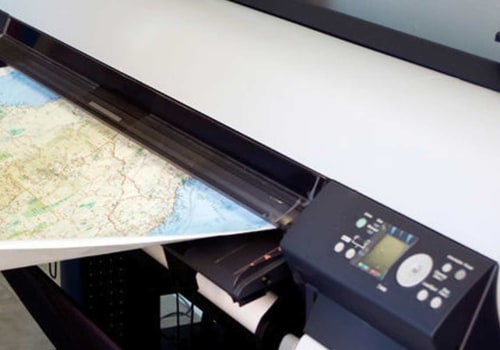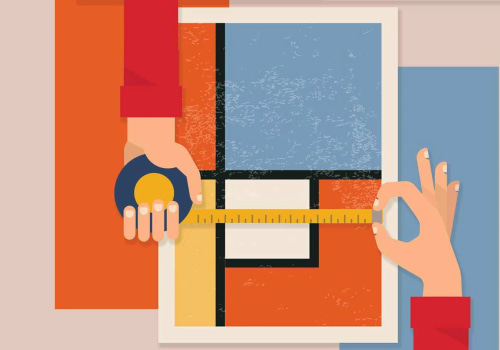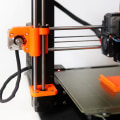The modern world is constantly pushing the boundaries of technology, and 3D printing is no exception. Selective Laser Sintering (SLS) printers are a rapidly growing technology that is revolutionizing the way we create large format prints. From product prototyping to mass production, SLS printers are becoming increasingly popular for their efficiency and ability to deliver top-notch results. In this article, we will explore the benefits of using Selective Laser Sintering (SLS) printers for large format printing, and why they have become the go-to choice for many professionals.
Selective Laser Sintering (SLS) 3D printing is a type of large format printing that utilizes lasers to fuse together tiny particles of plastic, metal, or ceramic powder into a solid object. The process involves a laser scanning across the surface of a powder bed, selectively melting the powder particles along a predetermined design. This type of printing is often used for industrial applications such as prototyping, manufacturing small batches of products, and producing parts with complex geometries that cannot be achieved by traditional manufacturing methods.
SLS 3D printing
offers several advantages compared to traditional manufacturing methods, such as its ability to produce complex geometries, its cost-effectiveness, and its speed.The steps involved in SLS 3D printing start with the creation of a 3D model of the object to be printed. This model is then converted into a specific file format and sent to the 3D printer. The printer then reads the file and begins building the object layer-by-layer using the powder material. Once the entire structure has been printed, the powder bed is heated until the particles are completely fused together.
The object is then cooled, and any excess powder can be removed. SLS 3D printers can use a variety of materials, including plastics, ceramics, and metals. These materials can be finely ground down into powder form to ensure an even distribution in the printing process. The choice of material depends on the end-use application; for example, plastic powders are suitable for prototyping while metal powders can be used for manufacturing small batches of products.
One of the main advantages of SLS 3D printing compared to traditional manufacturing methods is its ability to produce complex geometries with minimal waste. Traditional manufacturing methods often require cutting away material to achieve complex shapes, resulting in wasted material and labor costs. With SLS 3D printing, these complex shapes can be created without any cutting or other labor-intensive processes. This makes SLS 3D printing more cost-effective than traditional manufacturing methods.
In addition, SLS 3D printing is much faster than traditional manufacturing processes, allowing for more rapid production times. This makes it ideal for applications that require quick turnaround times, such as prototyping or small batch production runs. Furthermore, SLS 3D printing can be used to produce custom parts for a variety of industries, from automotive to aerospace. In summary, Selective Laser Sintering (SLS) 3D printing is a type of large format printing that utilizes lasers to fuse together tiny particles of plastic, metal, or ceramic powder into a solid object.
This type of printing offers several advantages compared to traditional manufacturing methods, such as its ability to produce complex geometries, its cost-effectiveness, and its speed. Additionally, it can be used for a variety of applications ranging from prototyping to manufacturing small batches of products to producing custom parts for different industries.
Potential Applications
Selective Laser Sintering (SLS) 3D printing has many potential applications, ranging from prototyping to manufacturing small batches of products. It is particularly well-suited for producing custom parts with complex geometries that cannot be achieved with traditional manufacturing methods. Examples of industries that could benefit from SLS 3D printing include aerospace, automotive, medical device, consumer goods, and engineering. SLS 3D printing can be used for prototyping new products or components.This is especially useful for short-run production runs and for testing new designs before committing to full-scale production. In addition, SLS 3D printing can be used to produce small batches of products, such as components or parts with complex geometries. This is especially beneficial for industries that require low-volume production runs. SLS 3D printing also has potential applications in a variety of industries. In the aerospace industry, it can be used to manufacture lighter, more complex components.
In the automotive industry, it can be used to produce custom parts that are lighter and more efficient than traditionally manufactured parts. In the medical device industry, SLS 3D printing can be used to produce custom implants and prosthetics with intricate geometries. In the consumer goods industry, SLS 3D printing can be used to produce customized products such as jewelry or small electronics. Finally, in the engineering industry, it can be used to produce components and products with complex shapes that would be otherwise difficult or impossible to create.
Advantages of SLS 3D Printing
Selective Laser Sintering (SLS) 3D printing is a type of large format printing that offers a number of advantages when compared to traditional manufacturing methods.One of the most notable advantages of SLS 3D printing is its ability to produce complex geometries that cannot be achieved using other methods. This makes it ideal for creating prototypes or small batches of products that require a high degree of accuracy and precision. In addition, SLS 3D printing is cost-effective, as it requires less material than traditional methods, and it is much faster, with parts being produced in a matter of hours rather than days or weeks. The cost-effectiveness of SLS 3D printing comes from its reliance on lasers to fuse tiny particles of plastic, metal, or ceramic powder together.
This means that less material is needed to produce a part, resulting in lower costs and shorter production times. In addition, SLS 3D printing is also capable of producing intricate designs with complex geometries, such as those found in medical implants or aerospace components, which are difficult to achieve with traditional manufacturing methods. Finally, SLS 3D printing is fast, with parts being produced in a matter of hours rather than days or weeks. This makes it an ideal choice for applications where speed is essential, such as prototyping or small-batch production.
In summary, SLS 3D printing offers a number of advantages when compared to traditional manufacturing methods. These include its ability to produce complex geometries, its cost-effectiveness, and its speed. Selective Laser Sintering (SLS) 3D printing is a type of large format printing that provides many advantages, such as the ability to create complex geometries, rapid prototyping, and small batch production. It can also be used for a variety of applications, such as product prototyping, manufacturing components, and creating customized parts. This article has explored the potential of SLS 3D printing for large format printing, and we encourage readers to explore more about this type of printing and its potential applications.











Leave Message